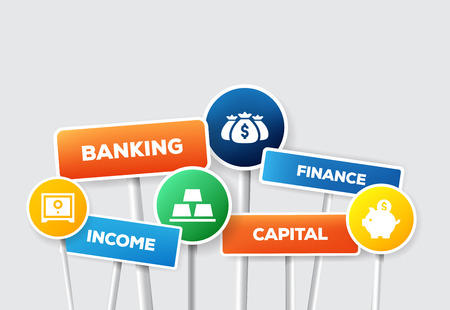Introduction: Why Try a No-Spend Challenge?
Imagine hitting pause on your spending habits for just one month—no online shopping sprees, no impromptu coffee runs, no “treat yourself” dinners out. That’s the heart of the no-spend challenge, a simple yet powerful concept that’s been catching fire across the United States. In an era where swipe-and-go has become second nature, more Americans are embracing this mindful money movement as a way to break free from financial autopilot and take control of their wallets. The no-spend challenge isn’t just about saving dollars; it’s about creating awareness, building discipline, and proving to yourself that you have what it takes to make lasting changes. Whether you’re looking to crush debt, build your emergency fund, or simply reset your relationship with money, committing to thirty days of intentional spending can be the first step in a transformative journey toward true financial freedom.
2. Setting the Ground Rules for Success
Before you jump into your no-spend month, laying down clear, personalized rules is crucial. This isn’t about deprivation—it’s about building new habits and gaining insight into your financial patterns. To get started, reflect on your spending triggers and daily routines that are uniquely shaped by American culture, like grabbing a Starbucks on your commute or impulsively shopping Amazon Prime deals. Define what “no-spend” means for you: will you cut out all non-essential purchases or just limit specific categories like dining out or entertainment? Remember, your challenge should be realistic enough to stick with but firm enough to make an impact.
Distinguishing Needs vs. Wants in Everyday Life
Success hinges on learning to separate needs from wants—a tricky task in a society built around convenience and consumerism. Needs are essentials: groceries, rent, utilities, transportation to work. Wants are everything else: takeout, subscription boxes, new tech gadgets, or those tempting Target runs. To help visualize the difference, use the table below as a reference when planning your no-spend month:
| Category | Needs (Essential) | Wants (Non-Essential) |
|---|---|---|
| Food | Groceries for home-cooked meals | Restaurant meals, coffee shop drinks |
| Housing | Rent/mortgage payments | Home decor upgrades |
| Transportation | Gas/public transit for commuting | Rideshares for convenience |
| Personal Care | Basic hygiene products | Spa treatments, beauty boxes |
| Entertainment | Library books, free events | Cinema tickets, streaming services |
Create Your Own No-Spend Guidelines
Sit down and write out your personal ground rules. Consider using these prompts: What are my absolute essentials? Where do I tend to overspend? How can I substitute wants with low- or no-cost alternatives? Involve family or roommates if they share expenses—open communication is key.
Aim for Progress, Not Perfection
Your no-spend month isn’t about punishing yourself; it’s about learning and adapting. If you slip up, don’t quit—just refocus and keep going. With the right rules in place and a mindset rooted in growth rather than guilt, you’ll set the stage for financial transformation that lasts long after your challenge ends.
![]()
3. Facing the Emotional Roadblocks
When you embark on a no-spend challenge, it’s not just your bank account that gets tested—it’s your willpower and emotions too. Many of us spend impulsively because of deeper triggers: stress after a tough day at work, the rush of scoring a deal, or even the subtle pressure to keep up with friends’ social activities. Recognizing these emotional and social cues is the first step toward taking control.
Understanding Your Triggers
Take note of when and why you feel tempted to spend. Is it boredom scrolling through online stores? Is it anxiety that prompts those late-night shopping sprees? Identifying patterns helps you pause before making a purchase. Try keeping a small journal or jotting notes on your phone about what you were feeling when the urge hit. You might be surprised how often spending is tied to emotions rather than real needs.
Practical Tips for Overcoming Temptation
When temptation strikes, redirect your energy. Replace shopping with a walk, call a friend, or dive into a hobby you’ve neglected. Out of sight, out of mind—unsubscribe from marketing emails and remove shopping apps from your phone. If you’re craving something new, try swapping items with friends or organizing a clothing exchange instead of buying new things.
Navigating Social Situations
One of the biggest hurdles is social pressure—especially in American culture, where going out often means spending money. Be honest with friends about your no-spend challenge; chances are, they’ll respect your goals (and may even join in). Suggest free or low-cost alternatives like hiking, potluck dinners, or game nights at home. Remember, true friends value your company more than the price tag of an outing.
Facing emotional roadblocks isn’t easy, but each time you resist an impulse buy or handle a tricky social situation, you build resilience. These small victories are what make the no-spend challenge transformative—not just for your wallet, but for your mindset and relationships too.
4. Life Hacks: Making the Most of What You Already Have
One of the most eye-opening parts of a No-Spend Challenge is learning to stretch what you already own. Americans are known for their ingenuity and “can-do” spirit, and there’s no better time to channel that energy than when you’re cutting back on spending. Instead of feeling deprived, this is your chance to get creative, have fun, and discover just how resourceful you can be.
Entertainment Without the Price Tag
Forget movie tickets or expensive nights out—there’s plenty of entertainment right at home or in your local community. Host a game night using board games collecting dust in your closet, stream free movies from your local library, or organize a potluck dinner where everyone brings a dish. For families, try backyard camping, scavenger hunts, or DIY craft projects using recycled materials.
Feeding Your Family with What’s On Hand
Before you make another grocery run, take stock of what’s already in your pantry and fridge. You’d be surprised by how many meals you can whip up from basics like rice, beans, pasta, and canned goods. Here’s a simple table to help spark meal ideas:
| Pantry Staple | Easy Meal Idea |
|---|---|
| Rice + Canned Beans | Quick burrito bowls with salsa and any veggies on hand |
| Pasta + Canned Tomatoes | Pasta marinara with sautéed onions or any leftover veggies |
| Bread + Eggs | Classic French toast or savory egg sandwiches |
| Canned Tuna + Crackers | Tuna salad bites with chopped pickles and mayo |
The Power of Community Resources
This is also a perfect time to tap into free resources in your community. From public parks and hiking trails to free museum days and library events, there’s no shortage of activities that cost nothing but can create lasting memories. Check your city’s website or local bulletin boards for free happenings.
Embracing American Resourcefulness
The No-Spend Challenge isn’t just about saving dollars—it’s about discovering the power of making do and making memories in the process. Whether you’re repurposing leftovers into new meals or turning an ordinary weekend into an adventure without spending a dime, you’re building habits that will serve you far beyond this one-month challenge.
5. What One Month Without Spending Teaches You
Completing a no-spend month is more than just a financial experiment—it’s a powerful journey of self-discovery. At first, the urge to buy your favorite latte or snag a deal online feels almost impossible to resist. But as the days pass, you start to notice something remarkable happening: your mindset shifts. Suddenly, you find yourself questioning needs versus wants, and those once-automatic purchases lose their grip on your wallet and your mind.
One of the most surprising lessons is just how much joy you can find in what you already have. Americans often hear that “more is better,” but a month without spending flips that narrative on its head. You begin to appreciate home-cooked meals, rediscover forgotten hobbies, and spend quality time with friends and family that doesn’t require shelling out cash. It’s a reminder that meaningful moments don’t have to come with a price tag.
Financial Clarity Emerges
The no-spend challenge also brings an unexpected sense of financial clarity. With every dollar accounted for, you see exactly where your money was going—sometimes to places that don’t align with your values or long-term goals. This insight can be both humbling and empowering. You realize that small, daily purchases add up fast, and by pressing pause, you open up opportunities for bigger dreams: paying off debt, building an emergency fund, or saving for a future adventure.
Personal Growth Beyond the Wallet
But perhaps the greatest takeaway is personal growth. The discipline it takes to say “no” in a culture that constantly encourages “yes” builds resilience and confidence. You prove to yourself that you are capable of making intentional choices—and sticking to them. This newfound self-control doesn’t disappear when the challenge ends; instead, it becomes part of who you are moving forward.
Small Changes, Lasting Impact
A month-long spending freeze teaches you that change doesn’t require grand gestures—just consistent, mindful steps. Whether you continue with strict budgets or simply approach spending more thoughtfully, the lessons linger long after the month is over. Ultimately, the no-spend challenge isn’t about deprivation; it’s about empowerment—and discovering how small changes today can set you on a path toward financial freedom tomorrow.
6. Staying on Track: Turning Short-Term Wins into Lifelong Habits
Completing a no-spend challenge is an incredible achievement, but the real magic happens when you turn that one-month victory into a lifelong money mindset. So, how do you keep up the momentum and prevent old habits from sneaking back in? Start by celebrating your wins—big or small. Recognize how far you’ve come, and let that pride fuel your next steps.
Keep Your Why Front and Center
Remind yourself why you started this journey in the first place. Maybe it was to pay off debt, save for a dream vacation, or simply gain control over your finances. Write down your “why” and put it somewhere visible, like your fridge or phone wallpaper. When temptation strikes, seeing your motivation in black and white can be a powerful anchor.
Create New Spending Rules
The end of your no-spend month doesn’t mean going back to old ways. Set up new guidelines for yourself: try “no-spend weekends,” set a 24-hour waiting period before buying non-essentials, or use cash envelopes for discretionary spending. These practical strategies help maintain structure while allowing some flexibility.
Track Progress and Celebrate Milestones
Financial growth is a marathon, not a sprint. Use apps or spreadsheets to track your spending and savings goals. Celebrate milestones along the way—maybe with a homemade treat or a fun (free) activity with friends. Acknowledging progress keeps you motivated and makes the journey enjoyable.
Surround Yourself with Support
Find an accountability partner, join online communities, or follow personal finance influencers who inspire you. Sharing successes and setbacks with others makes the process less lonely and more sustainable.
The no-spend challenge isn’t just about saving money for a month—it’s about rewiring your relationship with spending for good. By shifting your mindset from scarcity to intentionality, using actionable tools, and surrounding yourself with support, you’ll transform those short-term wins into lifelong financial freedom.


